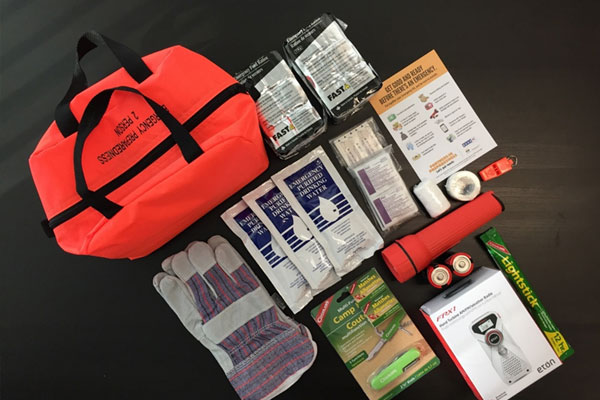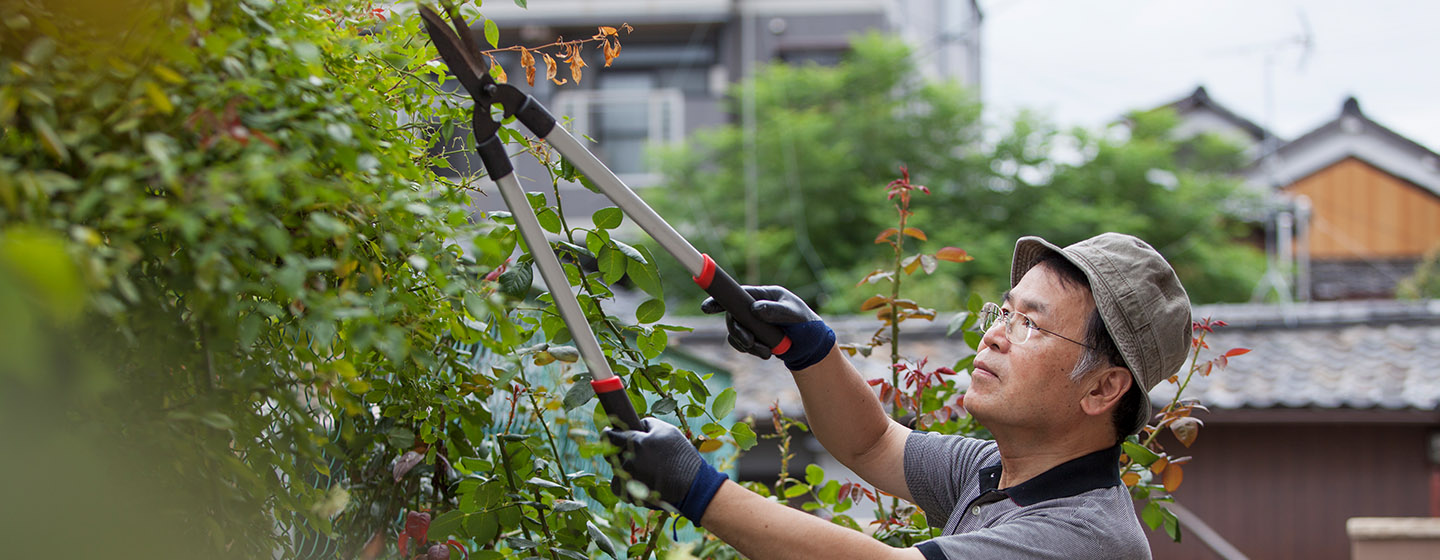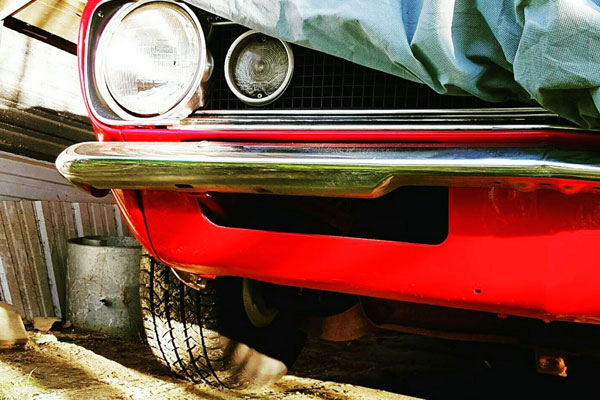Prepare for BC Wildfire Season with BCAA
Make an emergency plan and make sure your family knows it
Plan how you'll get safely out of your home and community should you be evacuated. Make sure your family, including young children, know your evacuation route, how you'll communicate with each other and where to meet up if you get separated. Evacuations can happen on a moment's notice, so advanced planning is critical.
Create an emergency kit
Prepare an emergency kit at home that can sustain you and your family for at least 72 hours. For a limited time, BCAA Members save 25% PLUS an additional 20% on selected emergency kits for home and your vehicle with our rewards partner F.A.S.T. (First Aid & Survival Technologies Limited).
Step one: Buy a ready-made kit or build your own, which includes items listed on Prepared BC's recommended basic essentials.
Step two: Customize your kit to meet your needs—for example, regular medications, comfort items for children or food for your pet.
Step three: Put your kit in a place that's easy to access. Prepare extra kits to keep in your vehicle and at work.

Create a 10-metre defensible space around your home
Fifty percent of home fires caused by wildfires are started by airborne sparks and embers, which can travel as far as two kilometres beyond an approaching wildfire. Simple measures—particularly 10 metres around your home—can help.

- Clear away fuel sources
Check around your property and, if possible, clear away any trees and brush that could add fuel to a fire. Remove firewood away from your house and do not store combustible materials, such as propane and natural gas tanks, under decks or porches. Use driveways, lawns and gravel to create a fuel break wherever possible. - Clean your roof and check under your deck
Clean your rooftop, including the gutters and corners, where debris tends to collect as flying embers could ignite these. If you're renovating or building a new home, consider fire-proofing your roof by using non-flammable materials like asphalt shingles, metal, slate or tile. Speak to a local roofing professional about options. Embers can also collect and ignite under your deck, especially if it's laden with dried pine needles, leaves and other flammable fuel sources. Never store propane tanks or woodpiles under your deck. - Space out trees
Ensure there's no direct path from the forest to your home. Make sure existing or newly planted trees are at least three metres apart from each other and 10 metres away from your home. - Add fire-resistant plants
Shrubs and trees with low sap, moist leaves and minimal accumulation of dead leaves can help to prevent the spread of wildfire. Avoid flammable plants with needles, resins, flaky bark and tall grasses. Mulch is also highly flammable and best avoided. - Get even more information at FireSmart BC
Learn more about how you can protect your home and property against a forest fire with the FireSmart Begins At Home Manual from FireSmart BC or Prepared BC's Wildfire Preparedness Guide.
Make sure you have the right coverage
Wildfires are just that, 'wild,' and we can't predict what will happen when they strike. In addition to creating a defensible space around your home and preparing your family, review your insurance policies so you fully understand your coverage.

- Keep all vehicles on your property insured
Keeping occasional-use recreational vehicles insured throughout wildfire season enables you to move them in the event of an evacuation. Basic liability insurance may be obtained to move uninsured vehicles to a safe location, but coverage for physical damage may not be available in fire-effected areas. Contact a BCAA Car Insurance Expert for details. - Keep your home insurance up-to-date
It may be difficult to purchase home insurance as a natural disaster is unfolding, so make sure you're covered for wildfire season. Know what coverage you have and whether you need to update your policy. Document your valuables with photos or videos, including any renovations to your home and yard. Speak to your local BCAA Home Insurance Expert early on to go over your policy. - Move and document valuables
Transfer irreplaceable possessions and valuables to a safe storage location and take photos of anything that can't be moved. Upload important documents and precious digital photos to a secured 'cloud' or onto a portable hard drive that you can encrypt for added security and take with you. - Talk to an insurance expert
For questions about home insurance coverage caused by a forest fire, speak to your local insurance advisor. You can also visit our BC Wildfire Insurance Tips page for answers to some of the most commonly asked questions about your coverage.
Residents in areas with moderate-to-high fire danger ratings should always stay prepared for a potential evacuation alert.
Stay up-to-date and be smoke-ready
Mobile apps that alert you of wildfires and hazards in your region can keep you up-to-date on threats so you can take appropriate action. The BC Wildfire Service or Alertable apps (both available through Apple or Google Play stores) are great options and can provide you with real-time wildfire information. Emergency Info BC provides information on evacuation alerts and orders, as well as response and recovery resources. You’ll also find information about Alert Ready and BC’s Emergency Alerting System here.
Check the air quality index regularly or subscribe to receive air quality notifications in your area (select locations) and limit time outdoors in smoky conditions. You might also want to consider a portable air cleaner for your home if you have the means. If you have pre-existing respiratory conditions, check-in with your doctor and have your medications ready.
Pack your essentials and key documents
Have a small bag of essentials packed and ready to go, including personal items that you and your family will need should you have to leave home and stay elsewhere overnight. Include copies of personal identification, prescriptions and insurance papers.
Be visible
Ensure emergency responders can see your home address. Be an advocate in your community for visible, fire-proof street signs.
Ensure your car has enough gas in its tank
Wildfires can spread vast distances and smoke can spread even further. Should you have to leave the area, you never know how far you'll have to drive to get to a safe location or reach a gas station.
In the event of an evacuation
Notice of an evacuation can happen fast and at any time. Here are vital to-dos to help you stay organized and informed.

Track your expenses
Keep your receipts for accommodation, meals and other out-of-the-ordinary expenses. Most BCAA Home Insurance policies will cover a certain amount of additional living expenses for those forced to evacuate their homes. As with any fire-related claim, the base policy deductible applies.
Contact your insurance provider
To make a claim or to access emergency funds, contact your insurance company right away. Most companies have a 24-hour emergency claims line. BCAA's 24-hour number is 1.888.268.BCAA (2222) or you can make a claim online at bcaa.com/makeaclaim.
When a major disaster strikes, like a wildfire or an earthquake, our BCAA Community Support Team may be there to help our Members, insurance customers and the local community. We set up support services at local resilience centres so we can help answer your questions and guide you through any insurance processes.
If you've been evacuated, you may be anxious to return home, but remember your home and its surroundings may not be the same as they were before, so practice caution.
Re-enter your home safely
There may be significant damage to your home and surrounding areas. Ensure you obey all signage and Damage Assessment Placecards (notices that the local government places on buildings within the damaged area).
If you can enter your home for an extended period:
- Bring essential supplies like drinking water, gloves, garbage bags and a flashlight
- Inspect the perimeter of your home before entering and make sure the main power breaker is off before you enter the home with caution (do not connect to a household circuit!)
- Avoid using your sewage disposal system and remember your septic system or sump pump may not work without power and water
- Do not use propane, gas or heating oil until you have contacted suppliers for inspection and service
Food and water safety tips
- Your tap water may not be suitable for drinking, so use bottled water or boil or disinfect tap water. Contact your local authority before using tap water
- Discard spoiled food in your refrigerator. If your freezer has been exposed to fire or without power for more than three days, throw out the contents
- Discard food items exposed to heat, ash chemicals, soot, water and smoke
Check-in with your mental health
Here are some helpful resources:
Getting help
- For 24/7 non-emergency assistance, visit the HealthLink BC website at www.healthlinkbc.ca or call 8-1-1 to speak to a health service coordinator who can connect you to other health care professionals if necessary.
- 310 Mental Health Support can be reached at 310-6789 (no area code needed) and offers emotional support, information and resources.
- Kids Help Phone is Canada's only national helpline for young people between the ages of five and 20 where they can speak to a counsellor by calling 1.800.668.6868 or text a volunteer crisis responder at 686868.
Learn more about recovering after a wildfire here.







